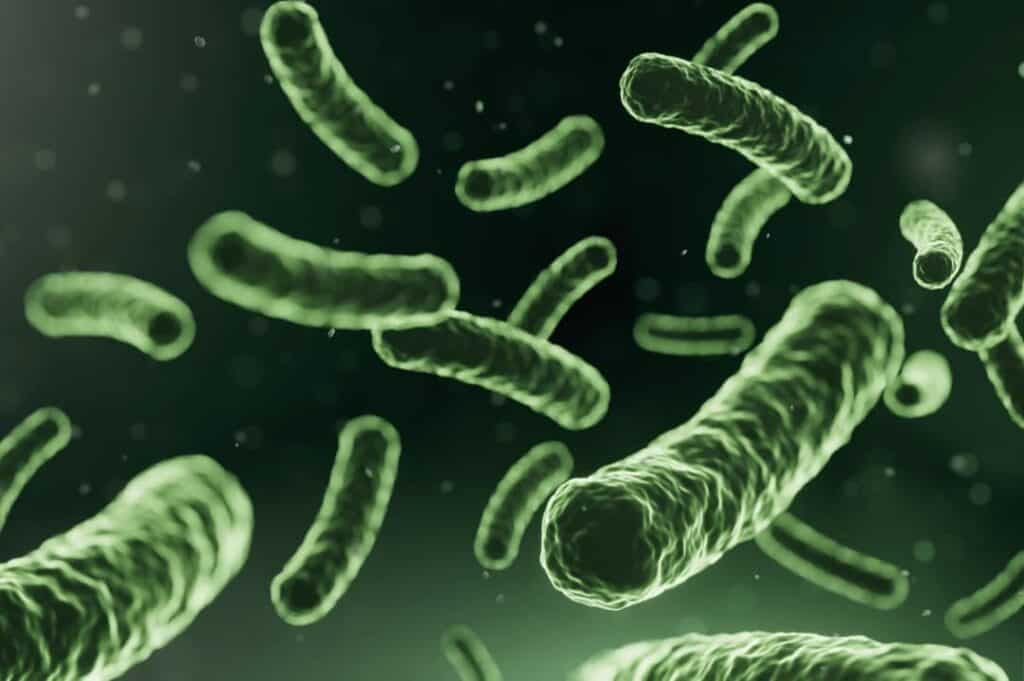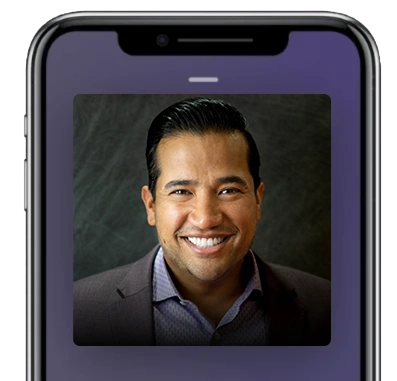In this Episode
- [02:32]Stephan welcomes Kiran Krishnan. They discuss Kiran’s expertise in the gut microbiome, including his background and the scope of his research.
- [11:05]Kiran differentiates prebiotics from probiotics. He also gives examples of soluble and insoluble fibers.
- [19:21]Stephan asks Kiran if breast milk is full of oligosaccharides for the newborn.
- [29:39]Kiran explains how antibiotics and stress are significant contributors to leaky gut. He delves into how these factors can lead to chronic low-grade inflammation and various chronic diseases.
- [34:57]Kiran and Stephan shift to the symptoms indicating the presence of a leaky gut, such as stress, mood disorders, immune issues, allergies, asthma, food intolerances, and skin conditions. Kiran underscores the lack of reliable testing for leaky gut.
- [37:12]Kiran addresses the prevalence of leaky gut among children, pointing to factors such as early antibiotic use, C-section births, and formula feeding.
- [47:27]Here’s how you can connect with Kiran Krishnan.
Kiran, it’s so great to have you on the show.
It’s a pleasure to be here. Thank you for having me.
The microbiome is a lot more important than many folks think. What got you started in that particular research area and then developing nutraceuticals or supplements to help with the microbiome?
For me, timing was really a significant factor in all this. I was going into studying microbiology with an interest in medicine. My angle was kind of a clinical microbiology approach. In the back of my mind, I always thought, “Maybe I’ll go into medicine as well.” However, I started studying microbiology and became really interested in its research side, especially in clinical microbiology. One issue with clinical microbiology is that the focus is largely on pathogens and microbes that make you sick.
Which is an important thing. But there are lots of people that are doing that work. I started looking at that and going, “Okay, what about all the other microbes?” We narrow in on this 1% or less of microbes that make you sick. “What about all the other ones? They must be doing something.” I had a significant curiosity about the rest of the microbial world as it relates to our functionality and our health. But there was no field of study for that right at that time. A few years into my research work and trying to figure out where I wanted to focus my time, the NIH kicked off the Human Microbiome Project. The Human Microbiome Project sought to do just that: to understand the microbial ecosystem in humans and how those microbes impacted our outcomes.
The vast majority of microbes are noninfectious. They’re not the scary ones that make you sick.
The vast majority of those microbes are noninfectious. They’re not the scary ones that make you sick. I was like, “Wow, that is the perfect area for me to go into.” I started really honing in on the microbiome. Of course, you realize quickly, once you hone in on the microbiome, that the largest density of microbes in the most influential microbiome is really in the gut. My gut has become a big focus for me right now. When you start thinking about the gut microbiome, even early studies on the microbiome from 15 years ago indicated that diet and what you put into your digestive system had a big impact on your gut microbiome and, thereby, your health outcomes. That kind of natural focus was fermented foods, probiotics, and prebiotics. These things could move the needle in terms of how they modulate the microbiome and thereby impact health. I started looking at the world of probiotics.
I came to find that there was a lot of nonsense in the world of probiotics. Unfortunately, there are a lot of assumptions being made and scientific leaps without a lot of good data. I honed in on probiotics as a place where we can bring some new science, new thinking, and new and additional evidence to use probiotics as a therapeutic tool to help people. The area I wanted to focus on was healthcare practitioners. I started Microbiome Labs as a healthcare practitioner-focused brand, looking at the gut and probiotics. That’s how everything funneled into all the work that I’ve done since then.
Why healthcare practitioners? Why not go directly to the consumer?
For a couple of reasons. Number one is that getting the consumer’s attention is really tough. As you know, you’ve got a very strong background in Internet and Internet understanding, marketing, SEO, etc. When you’re competing for their attention, they’re fleeting attention. It’s a very expensive and difficult, complicated endeavor. To stop a consumer in their tracks online and educate them on this new concept around probiotics, why the current ones don’t work, and all that is too much of an endeavor, especially if you’re not funded. We didn’t have any funding for what we were doing.
Fiber is one of the most powerful ways to enhance longevity and reduce the risk of chronic disease. Share on XWe’re bootstrapping everything. My business partner, who founded Microbiome Labs, is a clinician. The funny thing about him was that he was a functional medicine practitioner who focused on gut health. He basically addressed almost any condition that someone would walk in with through the gut. He had a gut health focus and didn’t use a single probiotic in his practice. That was very surprising to me. I said, “For a gut health practitioner who didn’t use a probiotic, that must be a significant reason.” He said his reason was that, “I’d tried many of them. Most of them don’t work. They don’t do anything.”
He used other things. He used ferments, prebiotics, and other things that he had developed a skill for and didn’t use any probiotics. I said that that is a problem that we need to address. A practitioner should have a good probiotic, as in their toolkit, and he’s a practitioner. We learned how to address the problems and gaps he saw. For practitioners, it became easy for me to go to conferences, get on the stage, do a talk, and have an hour with them to explain all of this versus consumers, who find it difficult to get their attention.
That makes sense. If I go to a practitioner and I get a recommendation or buy a supplement from them, like I’ve purchased, for example, MegaSporeBiotic, because of a recommendation from a practitioner, a holistic doctor, I’ve also purchased Hyperbiotics as the brand, and I don’t know the difference between those two. I just do what’s recommended to me. How do I become a more informed consumer of these different brands and strains, and how do they correlate to the issues I or a listener might face?
My solution to that has always been twofold. Number one, it’s about educating the practitioner to educate the patient because, in most functional medicine, holistic practitioners will spend much more time with their patients than regular allopaths. You’re lucky to see the allopath for 10 minutes, but most holistic practitioners will sit down with you for 40 minutes and talk through your history and explain things. My goal has always been to educate the practitioners so they understand the intricacies of the difference between Hyperbiotics and MegaSporeBiotic. Or what’s the difference between this kind of species or genus versus this kind in terms of their mechanism, with the hope that they then educate their patients on understanding why you would take this product over this product and why use this right now versus that?
With that, outside of a couple of years of the pandemic, I speak in person at around 50 to 55 conferences a year. On top of that, I do maybe another 40 webinars. I’m speaking to thousands of practitioners in a given year with the hope of really getting them to understand this so they can explain it better. Number two, over the last several years, I’ve also started to do a lot more podcasts and Instagram lives to put this information out to consumers. Consumers need to understand why they’re told to do certain things because when they understand the why, they create patterns of behaviors they stick to. If you understand why you do something, you have a much better chance of sticking to it than just doing it because you’re told to do it.
As adults, we brush our teeth every day because we understand its importance. As a kid, you didn’t understand its importance. Your parents always had to fight with you to brush your teeth. That’s just kind of the difference for me. It’s about spending as much of my time as I can being on programs like this to educate consumers and then directing consumers to programs like this so they can understand the differences because to really understand the difference between probiotics, what works, what doesn’t work, what they should be looking for.
The most well-known prebiotics are inulin, fructosaccharides, galactooligosaccharides, and xylooligosaccharides.
All that they need is for someone to explain it to them. It’s not a 32nd thing. It will take ten minutes on a program like this to really make them understand.
We’ve got the time. Why don’t we take those ten minutes right now? Also, while you’re at it, can you differentiate a prebiotic from a probiotic? Because some of our listeners don’t know the difference.
A prebiotic is really a food for the bacteria in your gut. There are many different versions of prebiotics. Now, regulatory agencies have accepted the definition of what constitutes a prebiotic, and those are typically what we call oligosaccharides. Oligosaccharides are these very complex carbohydrate structures that can only be metabolized by microbes. Our system cannot metabolize them at all. We can’t break them down and utilize the carbon in them for energy. We don’t get a good insulin spike and all that.
They’re purely to feed the microbes in your system. There are fructooligosaccharides, galactooligosaccharides, and xylooligosaccharides. They come from the fibrous portions of fruits, from resistant starches, and the fibrous portions of vegetables. In the case of xylooligosaccharides, they come from the inner part of the corn cob, that tough, kind of fibrous area. Kiwi has a lot of oligosaccharides in the fibrous middle part.
Those components are these really complex carbohydrate structures that we can’t break down. It passes right through your small bowel, where we digest our food and pull nutrients in. We don’t break it down; it passes right through, and then it goes into the large bowel, where there’s a huge population of microbes, and certain microbes can utilize them and then produce byproducts as a result of digesting them. Now, the byproducts they produce when they digest the oligosaccharides or prebiotics are what we benefit from because they make really beneficial things out of it. Now, fiber is another form of prebiotics as well. There are two different types of fiber: soluble fiber and insoluble fiber.
Soluble fibers are fibers that can bind water and form a gel-like structure. Insoluble fibers don’t form a gel. They don’t bind water. Now, most of the studies are on fiber, and we know that fiber is one of the most important things you can control for the microbiome, especially since most of the studies on fiber indicate that soluble fibers are really good for you. There’s some evidence that insoluble fibers are also good, but soluble fibers become some of the most important. When you think about prebiotics, consider a category of oligosaccharide prebiotics, such as inulin, fructoseaccharides, and galactooligosaccharides. Then the second category, which is the more general category, is fibers. Within the fiber, you have soluble fibers and insoluble fibers.
What are a couple of examples of soluble versus insoluble fibers?
Insoluble—if you look at things like psyllium husk, a very basic fiber, you can buy buckets of psyllium husk for almost nothing. That’s the key ingredient in Metamucil, for example. You put it in a glass of water, you can mix it, and it solubilizes. That means it’s a soluble fiber that you can consume. Insoluble fibers would be things like the bran that may be on the brown rice, so the outside bran doesn’t mix and doesn’t bind water. Now, there’s a benefit to that, too, because it’s kind of like this roughage that moves through the system. Some microbes can break down insoluble fibers as well.
Soluble fibers are fibers that can bind water and form a gel-like structure.
I think what people’s goals should be is you want to try to get about 3 to 4 grams per day of prebiotic oligosaccharides. Oligosaccharides are even more special than fiber because they specifically feed beneficial bacteria. Now fiber, if you have a lot of non-beneficial bacteria in your system, some of those non-beneficial bacteria can also break down the fiber and utilize them. Fiber can be a little bit of a mix, but in general, it’s a good thing to add to your diet. However, you want to get the oligosaccharides as well.
For me, my goal on a daily basis, when I’m thinking about the prebiotic fiber side of it, is to try to get 3 to 4 grams of prebiotic oligosaccharides that you need to supplement because it’s really hard to ensure you’re getting enough of that through food. I want to get around 30 to 40 grams of fiber, mostly soluble fiber, and mostly through food, if I can. I’m eating lots of high-fiber fruits, vegetables, and other things. It’s easy to just Google foods high in soluble fiber, and you’ll find all these foods, and you can try to add as much of them to your diet as you can.
Most of those guides will tell you how many grams of soluble fiber are in a serving of this food and that food. You can create a diet plan for yourself to get 30 to 40 grams of soluble fiber into your diet daily—3 to 4 grams of oligosaccharide prebiotics and 30 to 40 grams of soluble fiber. If you do that, you’re already dramatically helping your gut microbiome. There was also a huge meta-analysis study—this is a type of study that studies lots of studies and showed that for every 10 grams of fiber, you add to your daily diet hype, you reduce your mortality by 10%.
Fiber is one of the most powerful things you can do to enhance longevity and reduce chronic disease risk. There’s another study that accentuates how important fiber is. There’s a study showing that gluten-intolerant people who decide to go on a gluten-free diet house their mortality rates in the first year to a year and a half of going gluten-free dramatically increase. Now, that’s counterintuitive because you go, “Wait a minute, they’re not tolerant of gluten, which means gluten causes inflammation in them.”
Oligosaccharides are even more special than fiber because they specifically feed beneficial bacteria.
If they come off the gluten, why would their mortality rate, especially from things like heart disease and all that, increase? The reason is that more than 90% of all fiber intake in North America and the US comes from wheat. When these individuals turn off wheat, they fail to replace that fiber with other sources of fiber. What they’ve done is they’re going on a no-fiber diet. That impact is very dramatic, even in just a year or year and a half after starting it. It doesn’t mean that they have to eat gluten. It means you have to get fiber in some way or another into your system.
If you’re juicing, you’re actually removing all the fiber.
Exactly. That causes a problem for people because they go, “I’m getting my fruits and vegetables.” Well, you’re not, actually, because you’re just extracting the phytonutrients, which is great. Those are good for you. But you are missing all the fiber. That’s the stuff you’re throwing away right now. One of the things I would do when I would juice sometimes is because it’s nice and easy to juice with carrots, for example.
I always use carrots in my juicing. You take the fiber that comes out of it, bake it, and make chips out of it. Then you’ve got these delicious fiber-like chips. Whatever the fibrous component of the juicing, if that’s what you want to do, then take the fibrous portion, spread it out in a pan, brush some olive oil on it, put some salt and pepper, put it in the oven at 350F for like 15 minutes, they become crispy. Eat them as chips. Get that fiber into your system. That’s the whole prebiotic category.
By the way, I don’t know if you’ve ever seen this, but Jim Carrey had this hilarious skit many years ago. It’s called the juice weasel.
No, I have not.
It’s hilarious.
I’m going to look it up after we get up because I love anything Jim Carrey. I can imagine how good it is.
One more question before you switch on to the probiotics regarding oligosaccharides. Is breast milk full of oligosaccharides for the newborn?
I’m so glad you brought that up because that’s a really important indication of how important oligosaccharides are to our gut. If you look at human breast milk, it’s the only food we consume that’s been perfected by evolution over the last millions of years. When you look at the nutrient balance within human breast milk, almost 30% of the solids in human breast milk are oligosaccharide fibers.
The baby cannot use the oligosaccharide fibers for energy. It doesn’t help the baby from a metabolic perspective. What it does is it’s there just to feed the microbiome of the baby, to establish the microbiome and diversify it.
Create a little bit of a diet plan for yourself to try to get 30-40 grams of soluble fiber into your diet each day.
There are 200 different oligosaccharides in human breast milk, which means that we’ve developed, or at least women have developed, a biological system to get these unique fibers from their diet, past their digestive tract, through their liver, into their mammary glands. It can end up in breast milk.
That’s how important it is that the complex biology of getting some nutrients from that is complex, and it’s not like a mineral that can just diffuse through membranes. This is a complex nutrient that has to go through transport systems to end up in breast milk. That is done specifically through the course of human evolution, which underscores how important it is. And oligosaccharides will continue to be important for the rest of your life.
I can tell you most people who have digestive issues get so scared of fiber and oligosaccharides and all that because they’re so concerned about the bloating. Many people think that if you start to add a lot of fiber into your system, it may enhance your bloating. However, only a percentage of bloating is actually gas-related, and only a percentage is related to the wrong microbes metabolizing the fiber and producing gas. A lot of bloating that people experience is actually inflammation. Fiber will actually become the solution for that inflammation.
In some cases, you have to just slowly add in the oligosaccharides. You may not start with 3 grams or 4 grams a day, and you might start with 100 milligrams, or you might start with a couple hundred milligrams. Or add 1 gram of fiber a day. Over the next few weeks, you might add one or half a gram of fiber a day into your diet. You can build it up and build some tolerance. Ultimately, soluble fiber and oligosaccharides will be key to solving your gut issues, even though you might be really scared of it right now. In all my years of working in the gut health space, I recommend that every time to a group of people, whether practitioners or consumers.

That’s one of the first things I hear. “Well, but what if you can’t take fiber? What if you can’t tolerate it?” If you can’t consume fiber, the mortality studies are there. You know that if you can’t get an adequate amount of fiber, soluble fiber and oligosaccharides into your system, you’re going to increase your mortality rates down the line. You have to do it—no doubt about that.
Probiotics can be a big help in this case because they can enhance your utilization of fiber. Now, probiotics can fall into a couple of different categories. I’d say 99% of probiotics; I’ve rarely seen a probiotic that colonizes and permanently lives in your gut. That used to be the narrative in the probiotic world. That’s one of the first things I saw, and I was like, “That doesn’t happen, right?” The vast majority of probiotics are transient organisms. While there, they can affect certain things, and those effects can be profound if they’re the right organisms.
But many probiotics actually just kind of die and go through the system, and you poop them out 8 hours later. They’re not doing a whole lot of anything. This is why my business partner wasn’t using any probiotics at all. He saw clinically that he was giving probiotics to people, and nothing was really happening. You need specific strains to do specific functions in the gut. This whole idea of just more is better is also a significant misleading narrative in the probiotic space.
A lot of bloating that people experience is actually inflammation, and fiber will actually become the solution for that inflammation. Share on XWhen we first got into the probiotic space, we saw that companies were competing on how many species and CFUs they had in the product. You’d have company A going, “We have 15 strains and 30 billion CFUs,” and company B makes, “Our products are more powerful because we have 18 strains and 40 billion CFUs, and then we have 20 strains and 100 billion.” That’s all they were competing on. There’s zero science to support that more strains are better and that more billion CFUs are better.
There’s almost no research on that. And so that’s just a bunch of marketing nonsense. In fact, the more of the wrong strain you use, it could actually have a negative effect on your system. So we said, okay, we have to refine this approach on probiotics. We have to, number one, look at what kind of bacteria actually qualifies as a probiotic. What kind of features does it need to have to be able to use it as a probiotic? One of the first things you have to look at is the accepted scientific definition of a probiotic. The accepted scientific definition is a live microorganism that confers a health benefit to the host when administered in adequate amounts.
There are three key parts to this well-established scientific definition. Number one is that you’re delivering a live organism. If it’s not a live organism, we now have another definition: a postbiotic or a ghost probiotic. We’ll also tackle what that means and how that affects your system. But the first step is to make it a live organism. If it can’t survive in the bottle or the capsule sitting on the shelf and can’t survive through the gastric system, it doesn’t really qualify as a probiotic. Number two, when administered in adequate amounts, meaning that you have to show some sort of dose-response to this probiotic, you can’t just go 50 billion.
If you start adding a lot of fiber to your system, it may enhance your bloating.
“It sounds great because my competitor’s 30 billion.” Well, do you have a study that shows that 50 billion actually confers a health benefit to the host? 99.9% of probiotics on the market don’t have a single study behind them. You have no way of validating the second part of the definition, which is that administered inaccurate amounts confers a health benefit to the host. So we said, “Okay, we have to create a probiotic that qualifies according to all the scientific definitions.
We first said, “What kind of organism can naturally survive through the gastric system?” Because if you’re swallowing a probiotic, you’ve got this system designed to kill bacteria starting in your mouth and then in your stomach. Your stomach acid is called a gastric barrier because it kills most microbes. We asked if there are microbes that can naturally survive through the gastric barrier. As it turns out, spore-based bacteria can naturally survive through the gastric barrier.
They’ve developed this capability, this robustness, to be able to be swallowed and survive through the gastric system and enter the small intestine in a viable state. Then we honed in on spore-based organisms and said, “Okay, of the spore organisms, which one can actually function in the gut and provide a health benefit to the host?” So then you have to go through and look at the sequencing of the DNA of this organism, every protein, and all that it produces to truly understand what this organism may do in the gut if it gets there alive.
That’s where we honed in, and we worked with experts in the spore area, and we found the right strains that could not only survive but, once they got in, have the genes to produce valuable compounds for the host, like enzymes or peptides or short chain fatty acids. All these things that we know are beneficial for the host. We have the strain and must validate it through clinical research. Then, we put it through clinical studies to validate the outcomes.

That’s what we did to create what is truly a probiotic that meets all the scientific definitions and has been shown to be beneficial to the host, the person taking the product. This is why we developed MegaSporeBiotic and how we develop and why, within four or five years of development, it became the number one selling probiotic in the practitioner space, despite our competitors being way bigger than us and so on and having much more money to spend on marketing, sales, and all that stuff, we just let the science do the work for us and then the science validated it.
I would say that for most consumers who are listening and are trying to figure out what is the right probiotic for me, of course, working with a practitioner really helps someone who has some knowledge behind this because they can help guide you, but also know that the vast majority of stuff you have on the retail shelf, or you just go on Amazon and you type in probiotics, and most of the things you see are not probiotics. They’re not meeting the scientific definition.
They don’t have clinical trials on the finished product and probably don’t do much of anything in your system. What you need to look for are probiotics that have clinical trials on the finished formula confirming that there is a health benefit to the host, whether it’s alleviating gas or reducing inflammation, improving regularity, or stopping leaky gut and improving leaky gut or improving the skin, whatever it may be, there has to be some sort of clinical benefit from the finished product, and they have to have shown that through clinical research. Without that, you have no idea what it’s doing in the system or if it’s doing anything at all.
You want to add as many foods as you can to your diet.
Got it. Is there testing to see how your microbiome looks before and after you’ve taken the supplementation? I’m sure there are many different options out there for tests. What do you recommend?
There are a lot of different gut tests out there, but people do have to be cautious because there are a lot of highly error-prone gut tests as well because the technology around sequencing bacteria in a massive hoard of microbes has improved dramatically over the last 15 years. The problem is that many of the current gut testing companies still use technology from 15 years ago, which is a resolution issue.
For example, we all can understand that cameras and phones now have these incredible megapixel cameras that provide very high-resolution photography. Just imagine the old disposable cameras from 10-15 years ago. The difference in resolution between those cameras and what our phone can do today is similar to the difference in resolution from what the old sequencing technology can do versus the new sequencing technology. That gives you very different results.
The only test we’ve utilized is one developed at Microbiome Labs called BiomeFx because it uses this new high-resolution sequencing called whole genome sequencing, which is deep whole genome sequencing. It’s very high resolution, gives you 99.9% specificity and accuracy in the testing versus the old methodology, and has upwards of 80% errors in the sequencing and calling out of microbes. You can be completely misled by some of these tests because you look at the results and you go, “Oh, my God, I have pathogens all over the place.”
You might start taking all these antimicrobials all the time, damaging your system more than helping it. Lots of practitioners have been doing that and have done it significantly. One of the things we battled against in our education was that don’t use these inaccurate tests that then alarm you that you have all these pathogens, and then you put people on six months of antimicrobials, and it harms their gut way more than helps it.
That’s something we’ve been fighting against. If people really want to understand what’s going on in their gut and microbiome, I would say, first, do the basics. Before you ever test your microbiome, the basics are getting adequate fiber, prebiotics, and diet diversifying. That’s one of the most important things you can do for a healthy gut. The more diverse your diet is, the more diverse your microbiome is going to be, and the healthier you are. You want to add as many foods as you can to your diet.
You don’t want to have a diet where you’re eating seven things every single day, the same things. You want to diversify your diet. You want to take a good, effective probiotic if you’re doing just these few things and managing stress. I’ll talk about why I mentioned stress specifically, but if you’re doing your prebiotics and fiber, you’re diversifying your diet, taking good probiotics, and managing stress, you’re really doing the basics that you need for your gut.
Every bout of stress that you experience can alter your gut microbiome.
Once you get those basics out of the way, you test your microbiome to see what is still not improved. That’ll give you clues about what else you can do to enhance your microbiome by modulating your diet or adding things to your lifestyle. Let me mention stress, and I’ll give you an example of how a good, accurate microbiome test can allow you to adjust your diet to optimize your outcomes.
I mentioned stress because stress is the number one driver of a leaky gut—antibiotics and all that profoundly affect your gut and will drive a leaky gut over time. However, studies show that daily stress is the number one driver of leaky gut. The reason is that every bout of stress you experience can alter your gut microbiome a little bit. As you add up those bouts of stress throughout every day and every day of every week of the year, you start to get this mini dose of antibiotics every single day.
Then you add to that exposure to things like roundup and herbicides and pesticides and antibiotic courses and all these other things that affect your gut microbiome; you start to get a profound change in your microbiome, where you now have a high pathogen load or at least low levels of keystone species. These organisms help form and protect the lining of your gut. When you have low levels of those keystone species, your lining becomes leaky. A leaky gut becomes the most profound driver of chronic illness because it is the biggest source of chronic, low-grade inflammation.
That was a 2015 meta-analysis study published in Frontiers of Immunology that looked at stress-induced, leaky gut as the number one driver of mortality and morbidity worldwide. Stress-induced, leaky gut was a number one killer worldwide because it’s an underlying factor in most chronic diseases.
If you look at things like obesity, diabetes, cardiovascular disease, cancers, and autoimmune conditions, all of those have an underlying driver of chronic low-grade inflammation.
If you look at things like obesity, diabetes, cardiovascular disease, cancers, and autoimmune conditions, all of those have an underlying driver of chronic low-grade inflammation. The biggest source of chronic low-grade inflammation is a leaky gut. And the biggest driver of a leaky gut is stress.
There’s a test for leaky gut.
There’s not a great test for a leaky gut. There’s a test that you can use in research because you want to measure toxins that are leaking through the lining and ending up in circulation. The problem is that many of these toxins, especially the main ones used in research called LPs, have a very short half-life. When you pull serum or blood samples out, the clinician doesn’t have enough time to get it to the lab to analyze it. In research, we can do it because if you freeze the samples to -80 Fahrenheit, you actually preserve them. We can pull all these samples, freeze them all at -80, and then run them all at once to get the data. So you can presume, however, that you have a leaky gut. If you live in North America, if you experience stress, if you experience any sort of mood disorders, if you have any immune issues, if you have allergies, asthma, food intolerances, a little bit of eczema, you’ve had acne.
Almost all of these conditions are driven by a leaky gut. In our studies that we’ve done that are published, 55% of healthy young individuals have no chronic illnesses, no medical conditions that are reported at all, and 55% of them have profound leaky gut. If you think about adults who have one or two chronic conditions that they’re dealing with, they have a little bit of obesity, high resting blood sugar, or A1C. All of these conditions that most American adults are dealing with they all have profound leaky gut. You should always presume you have a leaky gut and do the things that we know help alleviate a leaky gut, which is the basics.
I talked about increasing the diversity of your microbiome by increasing the diversity of your diet, adding in soluble fiber, adding in some insoluble fiber, adding in oligosaccharides, taking good probiotics, and managing stress. All of these things work towards alleviating leaky gut. But also, big long-term studies show that when you do these things, they dramatically improve your outcomes. The outcomes are likely through alleviating leaky gut and chronic low-grade inflammation. But we know these things are just good for you.

Do you find that kids have leaky guts as well? Is that pretty common as well?
I would say so. When you’re born, your gut is leaky to begin with. That’s because your gut’s different layers and barriers haven’t formed well yet—the mucosal layer, intestinal epithelium, tight junctions, etc. Normally, the leakiness should subside after about a year and a half to two years as you’ve established your microbiome, and then from that point onwards, it shouldn’t be a leaky gut. But then, when you look at things like the asthma rates in kids, the allergy rates in kids.
When you look at spectrum disorders and the increased prevalence of that, when you look at obesity in kids, all of those are factors of leaky gut. I would say that most kids probably have a profound amount of leaky gut. Especially given that most kids before the age of four have had at least three courses of antibiotics, they likely all end up with leaky gut. They’re having antibiotics before their microbiome can even really establish themselves. On top of that, 30-33% of births are C-sections. C-section kids already have a dismantled microbiome because they’re not getting the full inoculum passing through the vaginal canal.
A lot of moms aren’t breastfeeding regularly because they’ve heard from their doctors and advertising and all that formula is just as good, or maybe even better than breast milk because it’s got DHA and this, that and the other. They’re misled into thinking that formula feeding is just as good. They may note the nurse for 10, 11, or 12 months. All those confounding factors together mean that kids are probably experiencing significant leaky gut early on. That’s probably a big explanation for why you see an increased prevalence rate of these conditions, like anxiety and panic disorders, asthma, allergies and so on in kids.
Food sensitivities are rampant in kids.
55% of healthy young individuals with no chronic illnesses and no medical conditions reported having leaky guts.
That’s rampant. These are things when you and I were kids, weren’t there. Peanut allergies and all these things weren’t there. Eczema in kids wasn’t so profound. But now, eczema and atopic dermatitis are affecting a huge percentage of kids. We didn’t see that when we were younger. There was more resilience to us than we have now. I wanted to give an example of how a gut test can help refine your approach once you do the basics.
Again, the reason I say don’t do a gut test until you’ve done the basics is that your gut may be messed up in many different ways. When you do a gut test and look at it, and it may be overwhelming, you might say, “Oh, my God, I have low diversity. I have too much of this, too little of that, and so on.” It can be overwhelming. You might go after each of those with a different approach, which may be nonsensical, confusing and overwhelming when many of those things could be alleviated just by the basics.
We talked about getting the basics down and then doing the gut test earlier. How long does it take to do the basics for your gut to be changed? Where would you then want to look at doing a gut test? I would say give it at least two to three months. So, let’s say you’ve diversified your diet or continue to diversify it. You’re adding 20, 30, or 40 grams of soluble fiber. You’re adding in three 4 grams of oligosaccharides. You’re doing mindfulness work and managing your stress.
Or you can use psychobiotics to help with stress. Zenbiome can be really powerful in helping you manage stress. You’re getting outdoors more, you’re getting more active, and you’re sleeping better. You’re doing all of those basics. Do that for about eight weeks. And then if you still have some issues you’re experiencing where you’re like, well, this hasn’t gotten better, do a gut test. So do the biome effects test. For example, some people tend to have very high levels of sulfate-reducing bacteria in their microbiomes.
What does that mean? Well, that means if you eat foods that contain high sulfates, these microbes will convert the sulfates into something called hydrogen sulfide. The problem with that is hydrogen sulfide can be very inflammatory to the bowels. Now, foods that are high in sulfates are very healthy. There are lots of foods like take sauerkraut or mushrooms and leeks and things like that. Many of these things, or even eggs, can be high in sulfates. You’re diversifying your diet and adding these beneficial foods, yet you may not be getting all the improvements. That may be because you have a little bit too much sulfate-reducing bacteria, which means it’s creating this hydrogen sulfide.
That’s a refinement, and then the test will also show you what you do to reduce those microbes. What you do for a short period of time is reduce the sulfate-rich foods and increase protein-based foods because the microbes that metabolize protein and actually produce ammonia are competitors to the sulfate-reducing bacteria. You favor those microbes for a short period of time. You bring down the sulfate microbes, and you rebalance it. You may adjust your diet a little bit for another four weeks or six weeks just to make that improvement. Those are some refinements you can make as you go along, but you don’t want to look at doing that until you get the basics down.
Using a test like Viome instead of BiomeFx would not be great. It wouldn’t be the optimal solution.
I have a lot of questions about that test, and lots of scientists do. If you just google problems with the biome, you’ll see a lot of questions about the science behind it. Because they’re number one, they’re looking at RNA versus DNA. DNA tells you who’s there. RNA tells you what was expressed the moment you grabbed the samples. Your microbes aren’t producing all the same RNA all the time. It doesn’t necessarily mean that because a particular protein is being expressed at that time, that’s the predominant protein expressed all the time. It’s just whenever you capture that sample.
Also, RNA is very unstable. It’s designed to be unstable because RNA is a message from your genes to the parts of your cells that make the proteins. It’s sending a message designed to have a self-destruction mode because you don’t want that message to be perpetual. It’s a short-term message. Your cell is going, “Hey, I need this protein. Make this for me right now. Here’s the message. Here’s the code for how to make the protein.”
And we want that code to self-destruct. The ability to capture and preserve RNA is another area of concern because the stability of RNA is really poor. DNA is incredibly stable. We know. I mean, you could take a mummy that’s been mummified for 5000 years and still pull DNA and do sequencing out of it. DNA has a lot of stability. So DNA is where all the studies are in terms of microbiome sequencing. All the published work is around DNA. That’s why I’m like, “I would lean on a DNA test versus an RNA test.”
We’re out of time. I have one quick question before we wrap up. When do you see, as a consumer, the need for something more invasive, like a colonic or suppository or even a fecal transplant? Sometimes, you have to bring in the big guns.
I would say if you do the basics that we talked about, and then you’re beyond the basics. Let’s say you do a gut test, and you’re adjusting your diet and so on, and you still have a profound issue. When I say a profound issue, I mean things like chronic diarrhea. You’re having two or three or more issues a day where you have loose stool, or you’re seeing things like what looks like blood in the stool, or you can’t gain weight, or you’re doing exercise and all, and you can’t lose weight. Or you’re nutrient deficient in a significant way. It’s good to do a micronutrient test once a year or just look at some of the basics of your liver function.
If you eat foods that contain high sulfates, microbes will convert the sulfates into hydrogen sulfide. The problem with that is that hydrogen sulfide can be very inflammatory to the bowels. Share on XIf you see any of those things being significantly off, then that’s when you might need to bring in some of the big guns. If you’re over 40 or 45, one of the important things to do is do a colonoscopy up the top because you want to visualize what’s going on. That individual might have significant polyps and diverticula and all kinds of things happening in their gut, which is why they’re experiencing the conditions they’re experiencing versus just doing a treatment.
You want to visually get an understanding of what’s happening, so you don’t want to let things like chronic constipation go too long. I’ve had friends like, “Oh, I go to the bathroom once every three days,” and I’m like, “Well, that’s not normal. You need to really go and get that checked out.” Now, let’s say you’re doing all the basics, adding foundational supplements and all that stuff, and you’re still experiencing that. Then, you may need to do another deeper dive into what’s happening—chronic loose stool and chronic constipation.
Those can both be indications of bigger problems happening in the system if you have severe food intolerances. You can’t add foods to your diet. You add a certain thing, you get all this Jarisch-Herxheimer reaction, and you get weakening, and you get lots of loose bowels, a rash, all that stuff. Those kinds of individuals are highly reactive to things and all that they may have to do a deeper dive. But not surprisingly, the vast majority of issues can be improved and controlled if you do the basics. The reason is that those issues exist because people don’t do the basics. We divorce ourselves from those basics pretty quickly once we get into life and living.
You have to pay attention to those canaries in the coal mine. Well, if our listener or viewer wants to learn more from you, where do you recommend they go? And if they want to buy the kits to test themselves or the supplements you recommended, where should they go?
I’m very active on Instagram, putting out as much educational information as I can so people are empowered with the knowledge to support themselves. My Instagram handle is @kiranbiome. You’ll also find my profile there if you put Kiran Krishnan on Facebook. Things get posted there quite a bit. If you want to listen to programs like this on many different topics as they relate to the microbiome or the gut, if you just go to YouTube and put in my name with a topic, say SIBO or bloating or whatever it may be, you’ll find an interview that I’ve done or presentation I’ve done on that topic because I’ve done a lot of them. Many of the hosts have kindly uploaded lots of that stuff to YouTube.
There are a lot of resources available for the products. So Microbiome Labs products, if you go to the Microbiome Labs website, you can find a practitioner in your area that carries the products. Some of the products are available on Amazon as well through a supplier-authorized supplier called Fortress Brands. Then, the gut test is called BiomeFx. You can find practitioners who can order the test there as well. So those are all the resources and all that.
If you can work with a practitioner, even a health coach online, to help create a program and some milestones for you, accountability, and all of that stuff, that could be really good. Everyone could use a coach and could use some direction. So, I recommend that you look up health coaches and things like that that can help you on your journey.
I’ve interviewed some of them here on the show, like Dr. Will Cole.
Will can be fantastic. I send a lot of people to Jennilyn Griffiths. She does a lot of microbiome testing and is very familiar with the microbiome, and a lot of times, if you can, many of them don’t cost much, but it’s a great way of really honing in on a program and being more methodical about your health approach and having some accountability, which is always good.
Kiran, thank you so much. This was fabulous. This is informational and potentially life-saving for some of our listeners. Thank you for all you do. You are out there in the world, spreading the message and speaking at so many conferences. My hat’s off to you for doing all those events. And listener, get the word out too because now you know the importance of your microbiome, probiotics, prebiotics, etc. So spread the word and make it a great week. We’ll catch you on the next episode. I’m your host, Stephan Spencer, and I’m signing off.
Important Links
Connect with Kiran Krishnan
Apps and Tools
Businesses/Organizations
People
Previous Get Yourself Optimized Episodes
Functional Medicine Meets Biohacking with Dr. Will Cole












